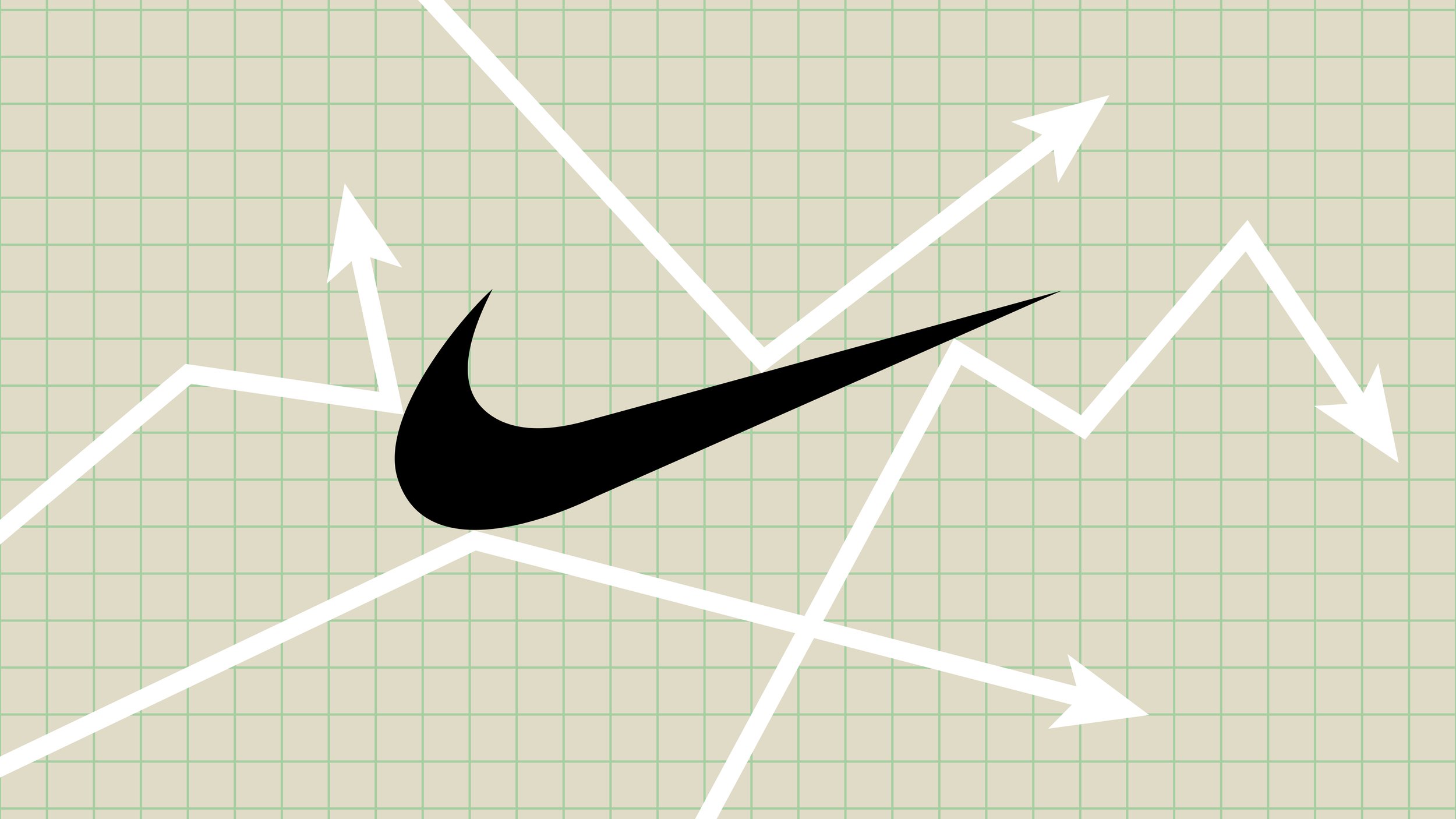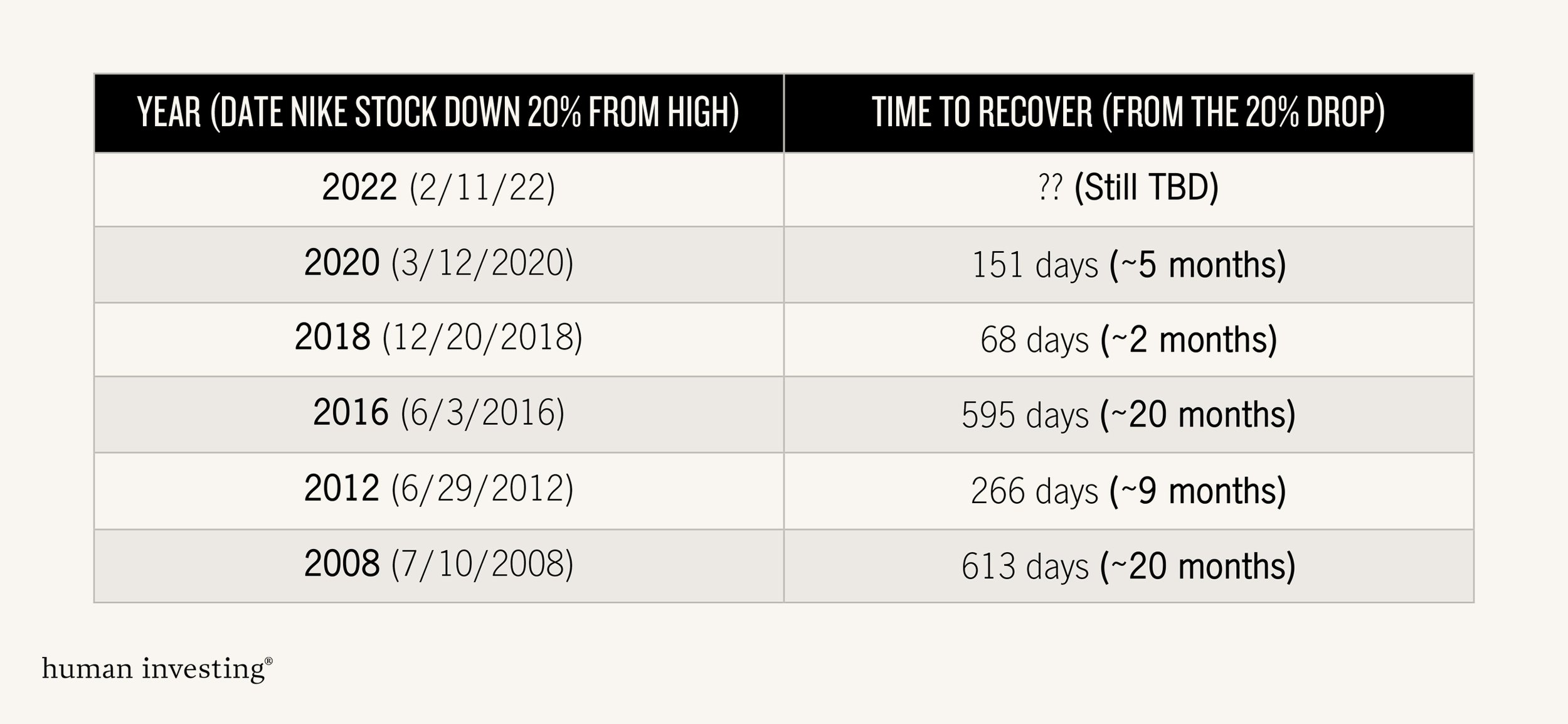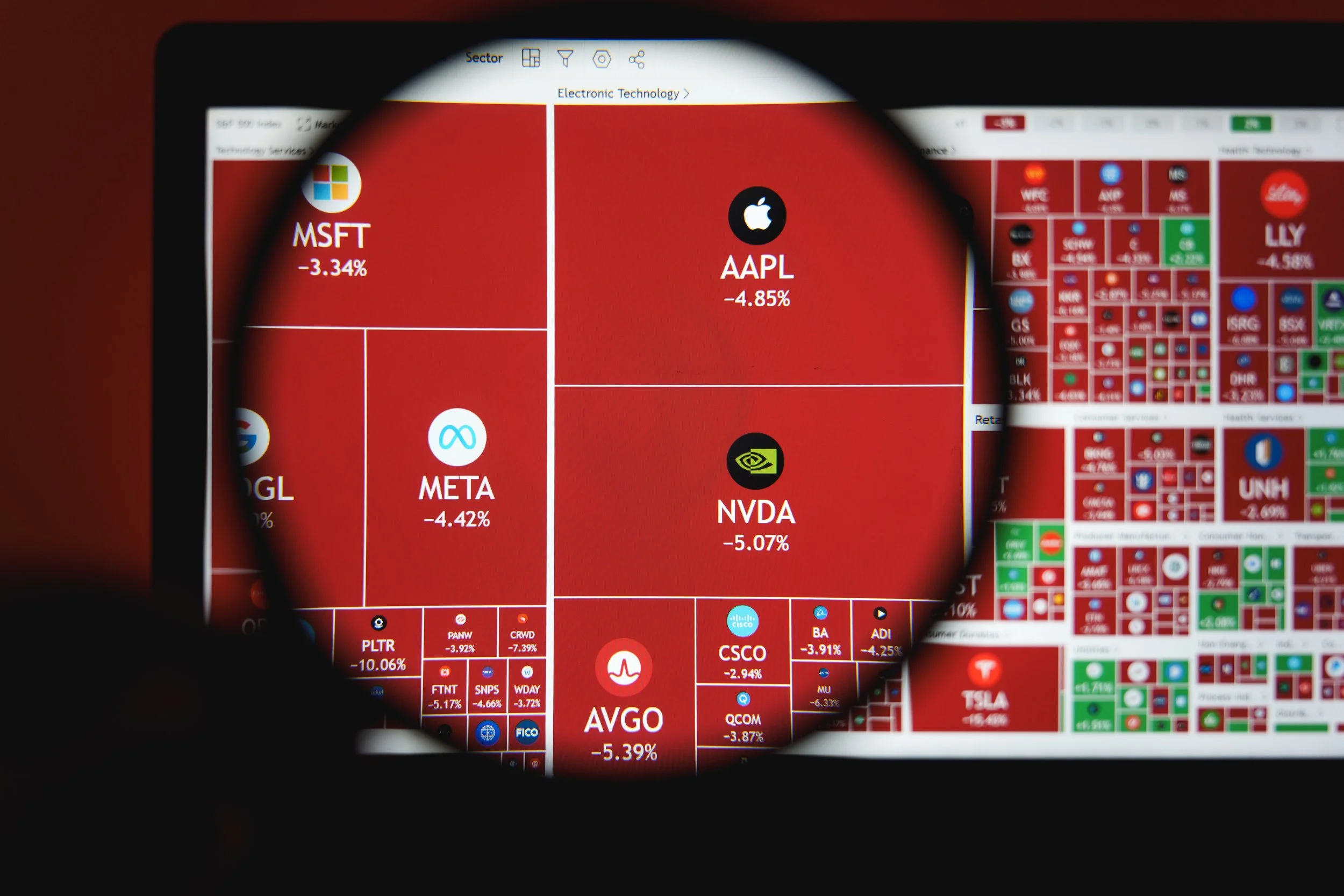How Long Does it Take for Nike Stock Downturns to Recover?
On November 5th of 2021, Nike stock closed at its most recent all-time high of $177.51. Much has changed since that time, with the stock price dropping over 38% to $109.12 as of 7/22/22. This has made financial decisions much more challenging for Nike leaders that hold and receive significant amounts of Nike stock as part of their compensation and benefits. Many rely on their stock for their financial goals and life plans like retiring, paying for college, paying off debt, contributing to charitable causes, and purchasing a vacation home or a new car.
Uncertainty and concern
Those decisions are now met with uncertainty and concern over the significant decrease in their Nike shares compared to just seven months ago. So, the understandable questions are starting to arise:
“Should I sell some or all of my stock now?”
“Should I delay my financial goals and life plans?”
“Is there another way to fund those goals without selling my stock?”
“How long do you think it will take to recover?”
Each individual has a unique financial situation, and the right decision is not the same for everyone.
To help Nike clients through these discussions, we thought providing information and context to the question of how long it will take for the stock to recover would be helpful.
While we cannot predict the future, we can look to past situations to get a sense of general time frames, which can help the decision-making process.
How Long Will this Down Period Last?
In examining the last five times Nike stock dropped by at least 20% from its high, we noted the periods to recover to their all-time high.
The average time for recovery has been just under one year at 339 days. You will notice from the table above that the recovery time varies widely from as quick as two months to as long as 20 months. Another interesting observation is that over the past 15 years, there has been a 20%+ drop in Nike stock every 2-4 years.
This most recent -20% downturn in Nike happened on February 11, 2022, about five months ago. So how much longer will this down period continue? No one truly knows, but if we go off of the history of the past 15 years, you should be prepared for up to another 15 months.
So, what should Nike leaders consider and assess now? Below are some tips.
TIP #1: Assess and Understand your Time Frame
Having enough time to be patient and wait for a potential recovery is one of the keys to the current environment. Take time to assess if you can hold tight or if you have very specific timelines or deadlines like a Stock Option expiration.
TIP #2: Take Note of your Risk Appetite
Even if you have the time to wait for a potential recovery, it may not be worth it if it is causing an undue amount of stress and anxiety. In this case, we find that developing a well-thought-out selling plan, where you sell part of your stock at different prices and time periods, can relieve some of the concern.
TIP #3: Develop a Contingency Plan
If the stock takes longer to recover than expected, identify other places where you can access cash in the short-term to meet those financial goals. Examples can include: using existing cash in the bank, the conservative part of a taxable investment account, a home equity line of credit, or a portfolio loan.
TIP #4: Pick the Most Optimal Shares for any Sales
When the time is right to sell, are you picking ESPP, RSUs, or Stock Options? We recommend carefully selecting the right type and exact shares to minimize taxes, maintain your long-term upside, and fit your time frame.
By looking into the past, we can see that downturns and recoveries in Nike stock are pretty standard and have happened regularly. We recognize that this historical data doesn’t mean it will be the same this time, but it does give you a sense of what it could look like.
“History never repeats itself, but it does often rhyme.”
-Mark Twain
If you need help assessing your current Nike stock and how it fits into your personal goals and situation, you can reach Marc at marc@humaninvesting.com.

















